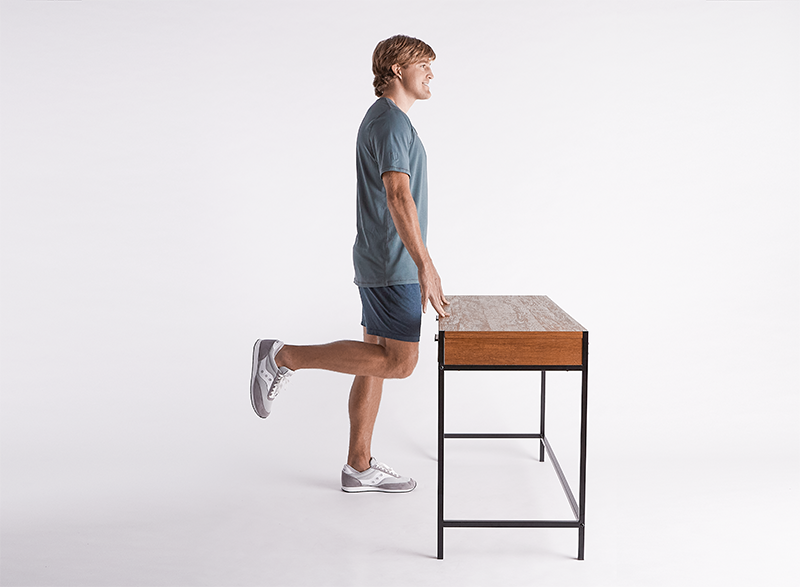How to Do a Hamstring Curl: A Hinge Health Guide
Learn how to do a hamstring curl to help with knee strength, plus modifications to make it easier or harder.
Table of Contents
The human body is a complex masterpiece of muscles and joints, each playing a crucial role in everyday movement. Among these vital components, the hamstrings stand out as a group of three muscles located on the back of the thighs, often overlooked and underappreciated. Yet, these mighty muscles are indispensable in numerous day-to-day activities, from walking and climbing stairs to bending over and lifting objects.
Since your hamstrings are involved in so much, hamstring weakness can affect a lot of different daily activities and make you more prone to injury or knee pain. The good news: There’s plenty you can do to strengthen your hamstrings, such as hamstring curls (sometimes called leg curls). Keep reading to learn more about how hamstring curls can benefit you, and how you can incorporate them into your routine.
Our Hinge Health Experts
Dylan Peterson, PT, DPT
What Is a Hamstring Curl?
A hamstring curl is a strengthening exercise that involves bending your knee from a standing position so your heel moves toward your butt as it lifts your lower leg. Hamstring curls can be done on exercise machines, but they’re also easy to do on your own at home, without any equipment.
What Muscles Does the Hamstring Curl Work?
You guessed it. Hamstring curls are an isolation exercise that primarily work your hamstrings, which activate as you lift your heel up to your butt. This helps with knee flexion (bending) in everyday life, as well as hip extension (opening your hips up). Along with building leg strength, hamstring curls can improve balance and stability.
Hamstring Curl Benefits
By building strength in your hamstrings, this simple-but-powerful exercise can benefit you in several ways, including:
Improving balance and mobility
Improving leg stability, which can reduce the risk of injuries, especially in the knees and lower back
Improving overall knee health by balancing strength in the quadriceps (front thigh muscles) and hamstrings
Supporting your lower back and alleviating back discomfort in daily activities
Making it easier to walk, run, climb stairs, and stand up from a seated position
Hamstring Curl: Exercises and Modifications
The information contained in these videos is intended to be used for educational purposes only and does not constitute medical advice or treatment for any specific condition. Hinge Health is not your healthcare provider and is not responsible for any injury sustained or exacerbated by your use of or participation in these exercises. Please consult with your healthcare provider with any questions you may have about your medical condition or treatment.
Hamstring Curl
Hamstring Curl
Hamstring Curl
Hamstring Curl
To do a hamstring curl:
Stand with both hands resting on a sturdy surface like a table or chair.
Lift one heel off the floor and move it toward your butt.
Squeeze the muscles in the back of your leg while you hold this position.
Lower your foot back to the floor.
Physical therapy (PT) is for more than just recovering from surgery or injury. It’s one of the top treatments for joint and muscle pain. It helps build strength, improve mobility, and reduce pain. And it doesn't always need to be in person.
Hinge Health members can conveniently access customized plans or chat with their care team at home or on the go — and experience an average 68% reduction in pain* within the first 12 weeks of their program. Learn more*.
Hamstring Curl Modifications
Hamstring Curl Modifications
Hamstring Curl Modifications
Hamstring Curl Modifications
To make the hamstring curl easier:
Limit how far you raise your foot toward your butt.
To make the hamstring curl harder:
Place a looped band around your ankles for extra resistance.
You can also try using ankle weights to increase resistance.
How Hinge Health Can Help You
If you have joint or muscle pain that makes it hard to move, you can get the relief you’ve been looking for with Hinge Health’s online exercise therapy program.
The best part: You don’t have to leave your home because our program is digital. That means you can easily get the care you need through our app, when and where it works for you.
Through our program, you’ll have access to therapeutic exercises and stretches for your condition. Additionally, you’ll have a personal care team to guide, support, and tailor our program to you.
See if you qualify for Hinge Health and confirm free coverage through your employer or benefit plan here.
This article and its contents are provided for educational and informational purposes only and do not constitute medical advice or professional services specific to you or your medical condition.
Looking for pain relief? Check if your employer or health plan covers our program
References
Al-Johani, A. H., Kachanathu, S. J., Ramadan Hafez, A., Al-Ahaideb, A., Algarni, A. D., Meshari Alroumi, A., & Alenazi, A. M. (2014). Comparative Study of Hamstring and Quadriceps Strengthening Treatments in the Management of Knee Osteoarthritis. Journal of Physical Therapy Science, 26(6), 817–820. doi:10.1589/jpts.26.817
Hafez, A. R., Al-Johani, A. H., Zakaria, A. R., Al-Ahaideb, A., Buragadda, S., Melam, G. R., & Kachanathu, S. J. (2013). Treatment of Knee Osteoarthritis in Relation to Hamstring and Quadriceps Strength. Journal of Physical Therapy Science, 25(11), 1401–1405. doi:10.1589/jpts.25.1401
McAllister, M. J., Hammond, K. G., Schilling, B. K., Ferreria, L. C., Reed, J. P., & Weiss, L. W. (2014). Muscle Activation During Various Hamstring Exercises. Journal of Strength and Conditioning Research, 28(6), 1573–1580. doi:10.1519/jsc.0000000000000302
